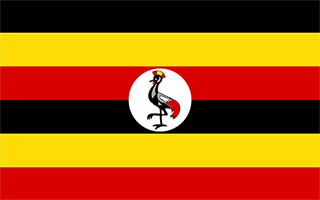Facts and Data
Webpages:
Official Unesco Page
Protectedplanet.net
Basis Data:
Unesco World heritage since: 1994
Size of heritage: 32,092 ha
Coordinates:
Longitude: 29,661°
Latitude: -0,919°
Summary
Located in south-western Uganda, at the junction of the plain and mountain forests, Bwindi Park covers 32,000 ha and is known for its exceptional biodiversity, with more than 160 species of trees and over 100 species of ferns. Many types of birds and butterflies can also be found there, as well as many endangered species, including the mountain gorilla.
Location on Map
Show bigger map on Openstreetmap
Introduction
Bwindi Impenetrable National Park is a UNESCO World Heritage site located in the districts of Kabale, Kisoro, and Rukungiri in Uganda. This national park is renowned for its exceptional biodiversity, particularly its population of endangered mountain gorillas. With its rich history and pristine natural beauty, Bwindi Impenetrable National Park is a must-visit destination for nature enthusiasts and wildlife lovers.
History
The history of Bwindi Impenetrable National Park dates back to 1932 when it was established as a forest reserve. In 1991, it was designated as a national park to protect its unique ecosystem and the critically endangered mountain gorillas that inhabit the area. The park was later recognized as a UNESCO World Heritage site in 1994, acknowledging its outstanding universal value.
Current State
Bwindi Impenetrable National Park covers an area of approximately 331 square kilometers and is characterized by its dense tropical rainforest, steep hills, and deep valleys. The park is home to over 400 mountain gorillas, which is almost half of the world's population of this endangered species. It is also a sanctuary for numerous other species, including 120 mammal species, 348 bird species, 220 butterfly species, and 27 frog species.
The park offers a range of activities for visitors, including gorilla trekking, which is the main attraction. Gorilla trekking allows visitors to observe these magnificent creatures in their natural habitat, providing a unique and unforgettable experience. However, due to the limited number of permits available each day, it is advisable to book in advance.
In addition to gorilla trekking, Bwindi Impenetrable National Park offers opportunities for bird watching, nature walks, and cultural encounters with the local Batwa community. The park's diverse flora and fauna make it a paradise for nature lovers and photographers, with countless opportunities to capture breathtaking moments.
Efforts are being made to ensure the conservation and sustainable management of Bwindi Impenetrable National Park. The park is protected by the Uganda Wildlife Authority, which works tirelessly to combat poaching and illegal activities. Local communities are also involved in conservation efforts, with initiatives in place to promote sustainable tourism and provide economic benefits to the surrounding communities.
However, the park still faces challenges, including habitat loss, encroachment, and climate change. These threats highlight the importance of ongoing conservation efforts and the need for continued support to protect this invaluable natural heritage.
Conclusion
Bwindi Impenetrable National Park is a treasure trove of biodiversity and a sanctuary for endangered species, particularly the mountain gorillas. Its recognition as a UNESCO World Heritage site is a testament to its exceptional value and the need to preserve it for future generations. By visiting this remarkable national park, tourists not only have the opportunity to witness the wonders of nature but also contribute to its conservation and the well-being of local communities.
